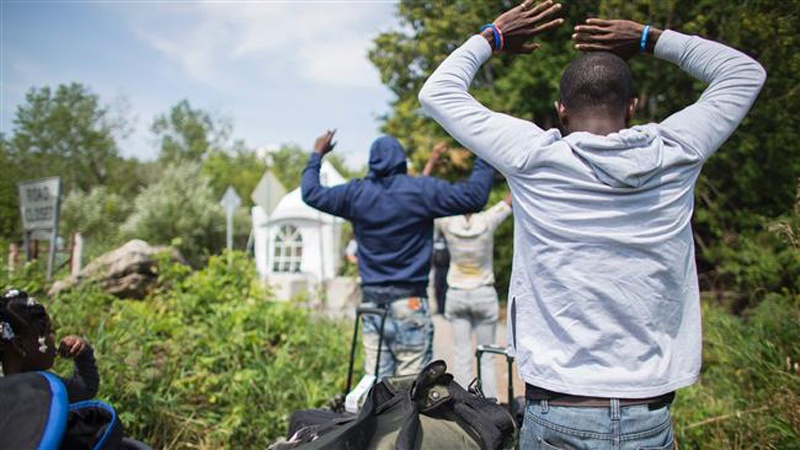Canada working to handle surge in refugee arrivals from US
Soldiers busily assemble tents with wooden floors, lighting, and heating in Canada's Quebec Province near the US border to temporarily house a surge in asylum seekers from the United States.
Children run between rows and rows of the military green tents as their parents line up to speak with immigration officials and file refugee claims.
Throughout the day, school buses drop off dozens of people at a time at the makeshift tent city in Saint-Bernard-de-Lacolle, Quebec. They walked across the border with suitcases in hand, before being picked up by federal police, who deliver them here.
Eventually, the newcomers will be transferred to Montreal or a government facility in Ontario Province, where officials will help them find more suitable accommodations while their claims are considered.
Security prevented media from speaking to any of the tent city residents.
Most of the new arrivals are Haitians who face expulsion from the United States at the end of the year. Then, temporary asylum granted to 60,000 Haitians affected by a devastating 2010 earthquake is due to expire.
Their numbers have soared from about 400 in May to 3,800 in the first weeks of August.
Under a Canada-US agreement, asylum seekers traveling through the United States would be turned away at Canadian border checkpoints and told to file a refugee claim in the United States.
But that rule does not apply to people who reach Canadian soil unchecked, through backwoods.
The Canada-US border is the longest between any countries in the world. There are no fences along the vast stretches of dense forests and mountainous terrain, and security is relatively low.
Those who bypass border checkpoints to enter are detained by the Royal Canadian Mounted Police, but they are assured an opportunity to file a refugee claim in Canada.
The military was sent in to help set up a camp near the border at the beginning of August, then a second, and a third, to accommodate newcomers who have made the journey.
Border, police, and immigration staffing have also been increased to handle the influx.
In the meantime, the federal government has been feverishly working to dispel misinformation being spread in the United States and overseas about how to flout Canada's immigration laws.
In fact, only half of the wave of Haitian nationals who tried last year were accepted as refugees. The remainder were ordered out of the country, according to officials.
SS



